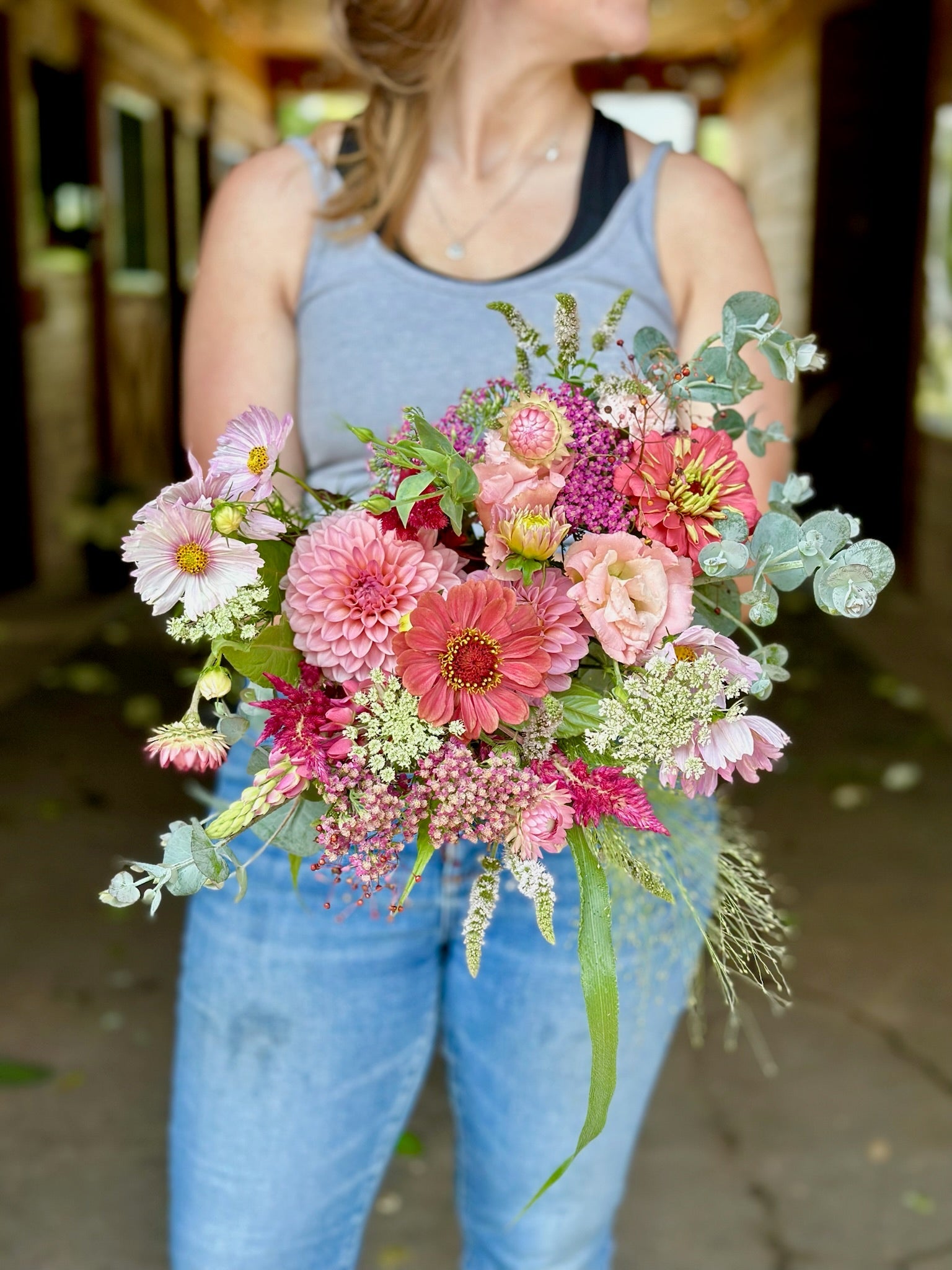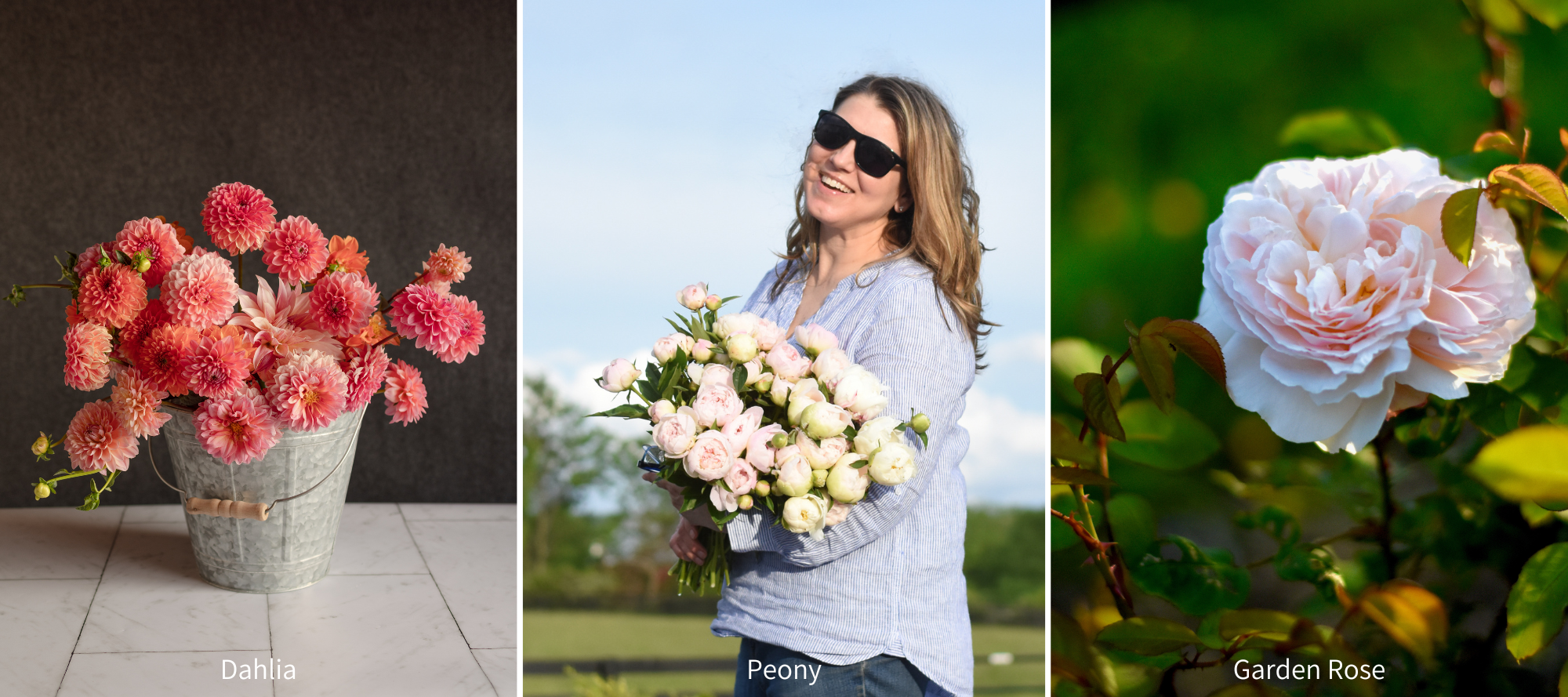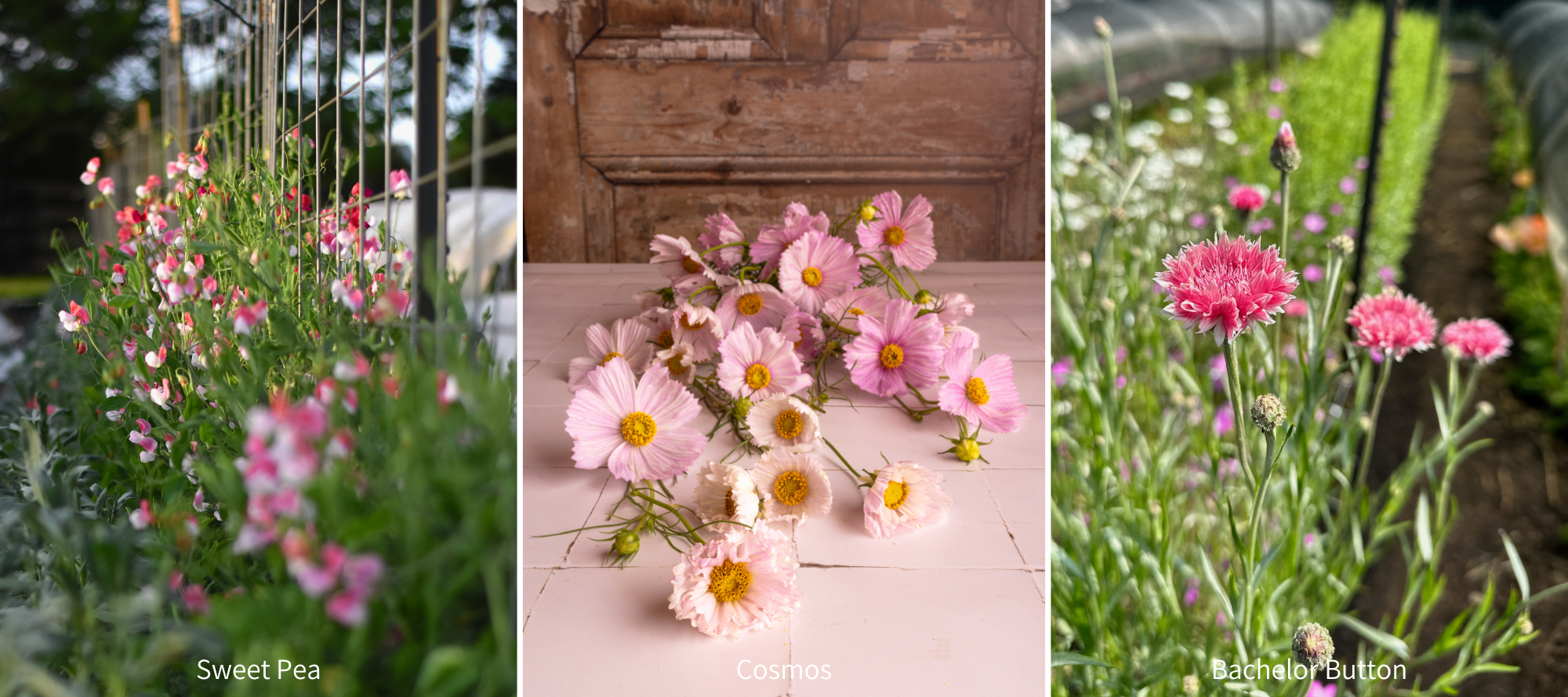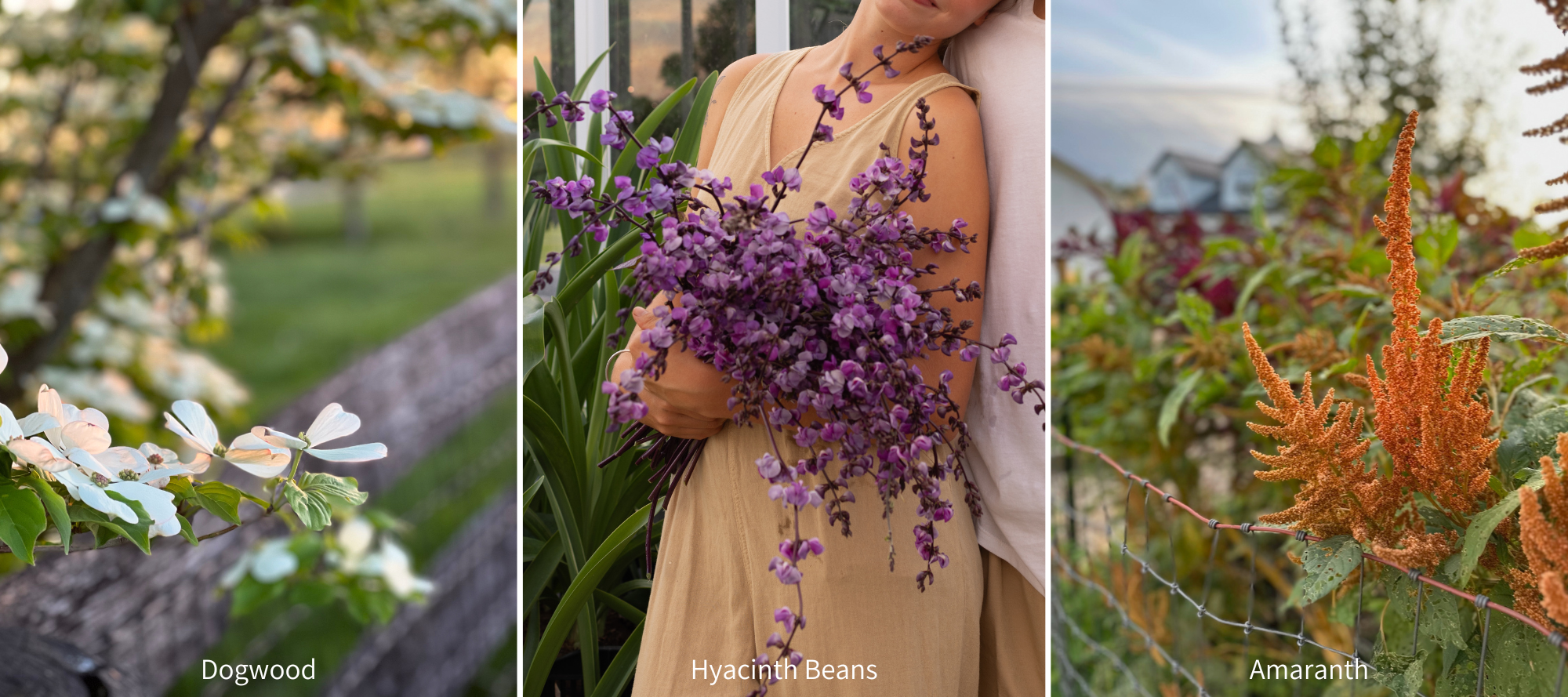
The Bouquet Blueprint™ Framework
6 Flower Types You Need to Make Beautiful, Garden-Inspired Bouquets
The Bouquet Blueprint™ framework is simple enough that it will enable anyone to make a stunning mixed bouquet. In fact, we teach the concepts behind the Blueprint in our beginner workshops and it’s how we train new farmer-florists on the farm. At the heart of the Blueprint are six different floral ingredients. Once you know what they are and the right ratio to use them in, you can create gorgeous bouquets in any season or color palette.
Here’s an introduction to the six floral types:

Focal Flowers
The stars of the show, Focal Flowers are the largest flower(s) in a bouquet. These beauties command attention and draw the eye, and are the single most dominant bloom in the bouquet. By virtue of their size, a Focal Flower’s coloration dictates the color palette for the rest of the design. Focal flowers often sit deeper in a bouquet than many of their counterparts, both to avoid hiding the smaller blooms in the bouquet from sight, but also because they simply don’t need to project out from the central mass of the bouquet to be noticed. Examples of Focal Flowers include dahlias, peonies, and garden roses.

Foundation Flowers
Though not as grand in size as their focal counterparts, Foundation Flowers are no less significant. These versatile blooms form the backbone of a bouquet or arrangement, offering structure, volume, and a rich tapestry of shapes and textures. They outnumber all other the other elements in the bouquet, creating a lush, dense base that enhances the visual complexity of the bouquet. They can take on almost any shape – rounded, conical, or disk – and play an integral, foundational (hence the name) role in a bouquet. While some of the other varieties listed here could be skipped, it’s impossible to make a well-balanced, garden-inspired mixed bouquet without Foundation Flowers. Examples include ranunculus, lisianthus, and snapdragons.

Filler Flowers
Far from being mere space-fillers, Filler Flowers are the glue that holds a bouquet together, by supporting (figuratively and sometimes literally) and elevating the other elements. These understated yet vital flowers add volume, texture, and a sense of fullness. Without them, a bouquet loses one of the most important elements of garden-inspired design – that loose, effortless feeling that comes when the showier blooms in a bouquet have a little space from each other. Eliminate the filler in a bouquet, and you may end up with a “roundy moundy” – a tight ball of blooms that looks like they’re ready to burst out of their confinement and is the antithesis of garden-inspired design. Examples of Filler Flowers include hydrangea, yarrow, and feverfew.

Floater Flowers
Floaters are the whispers of whimsy in our bouquets, the delicate blooms that hover and dance above the rest and lend an air of lightness and ethereal beauty. These flowers always sit above the others in a bouquet, adding a layer of interest that draws the eye upward. The quintessential Floater Flower has a flexible stem that lets it bounce and bob above the other flowers in the bouquet, providing visual and literal movement. While a smaller size isn’t a prerequisite for this category, Floater Flowers need to be delicate enough in stature to not block visual access to the flowers beneath them in the bouquet. Sweet peas, cosmos, and bachelor buttons (below) are all examples of Floater Flowers.

Finisher Flowers
Finishers are the final flourish, the elements that spill over the edges of a bouquet and add an unexpected twist. These are the droopy, trailing, or twiggy accents that frame an arrangement and add volume, texture, and an element of surprise. Flowers fall into the finisher category as much for practical reasons as aesthetic ones – they are often twiggy or branchy, or may have a trailing habit, making them difficult to place in the interior of a bouquet. We call them finishers because they are the last element – other than the foliage – to get added to a mixed bouquet. This allows them to be their quirky, floppy or branching selves without getting in the way of the other elements of the bouquet. If there is one flower type that can be left out of a bouquet without imperiling the entire look, it’s the Finisher Flower, but why would you want to? Examples include dogwood branches, hyacinth beans, and amaranth.

Foliage
Like Filler Flowers, sometimes Foliage stems get a bad rap, for the simple fact that, well, they’re not flowers. Foliage provides a critical backdrop to the rest of a bouquet, providing a visual reference to the natural environment that the flowers came from. Leave out the foliage and a mixed bouquet quickly loses its garden-inspired look. Foliage can also provide a physical foundation for other flowers in a bouquet, helping prevent tulips from bending themselves upside-down or giving a dahlia a place to rest its heavy head. While typically some shade of green, foliage can provide an important color component to a bouquet, whether that’s from silvery-white eucalyptus or the creamy tones of variegated mint. The best foliage is leafy and lush, and some of my favorites include scented geranium, eucalyptus, and raspberry foliage, all of which are shown here.
Interested to know how we developed The Bouquet Blueprint and why we believe it's crucial for farmer florists everywhere? Check out our blog below which details how this formula clarified what we should grow, streamlined our production processes, and guaranteed a sophisticated product for our brand and customers.
